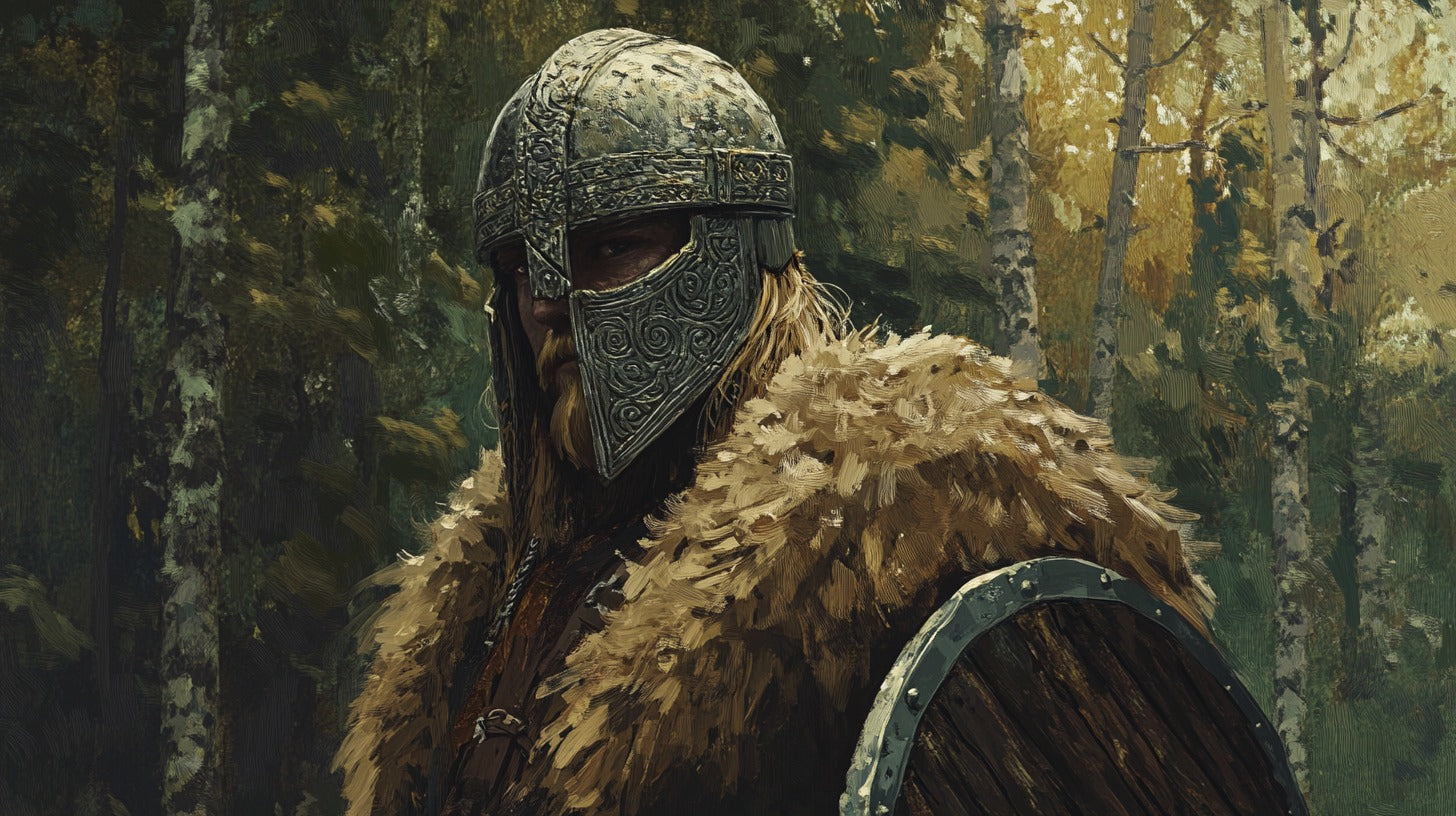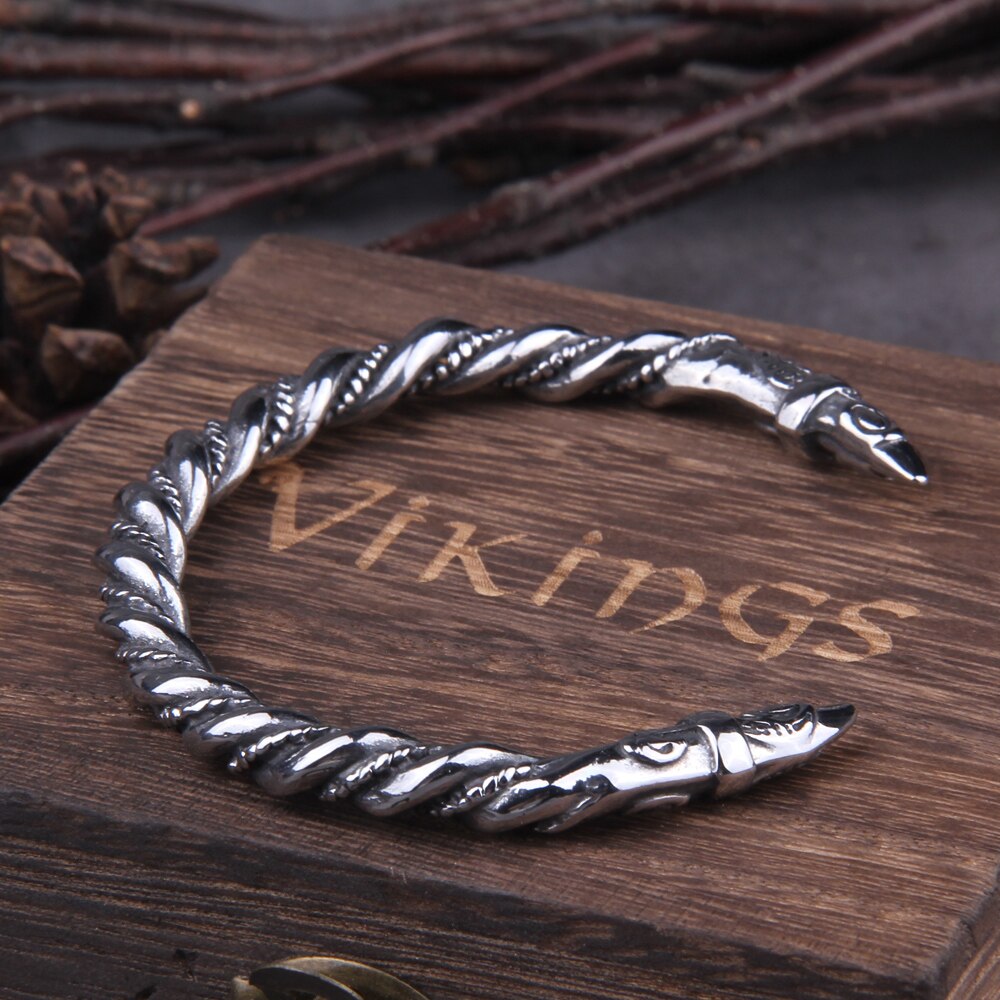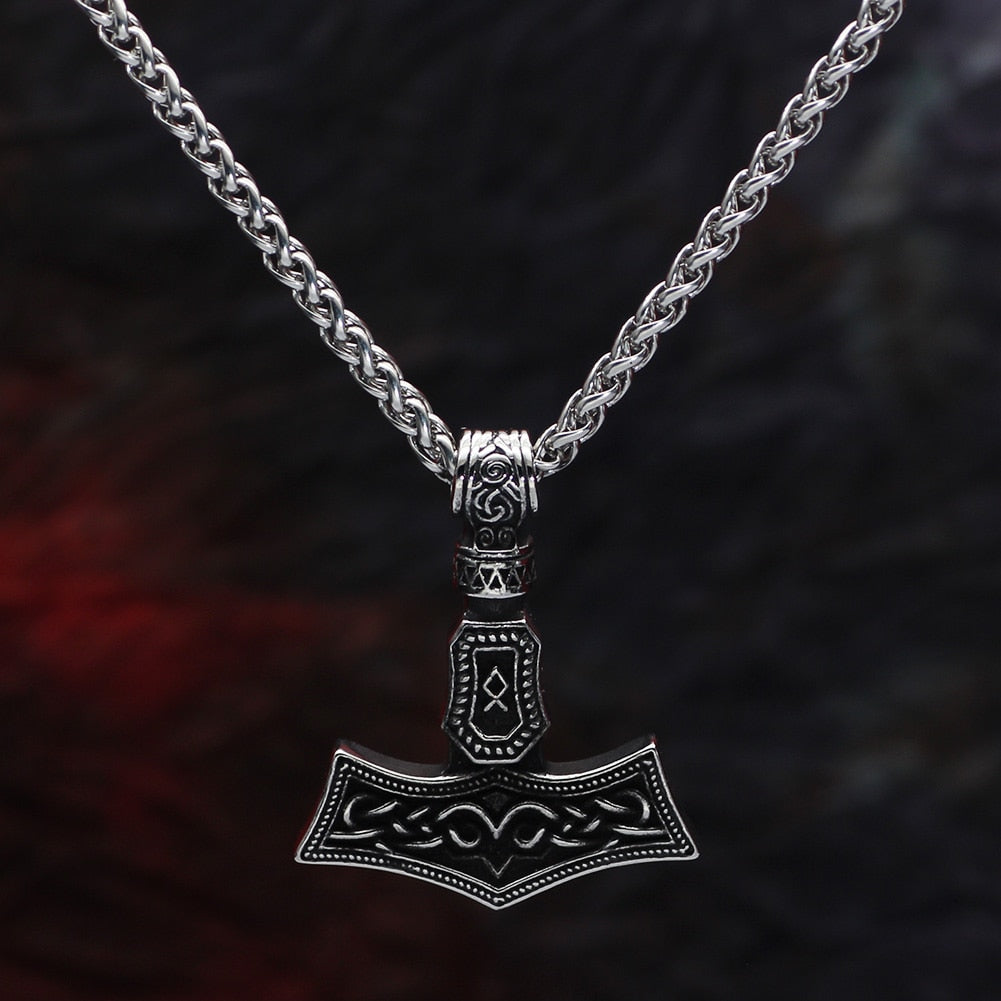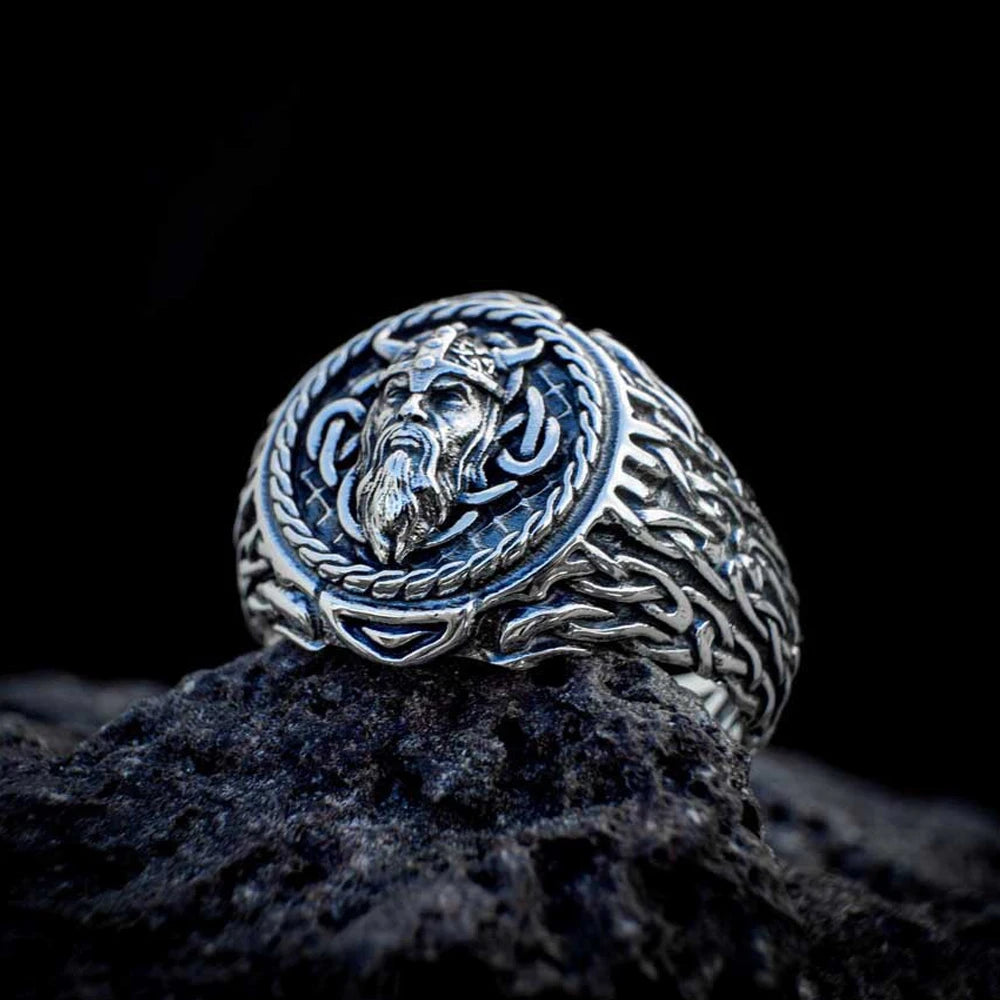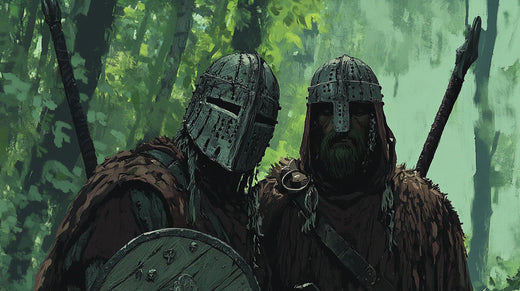
The Goths: Ancient Germanic People Who Shaped European History
The Goths were one of the most significant Germanic peoples to emerge in late antiquity. From the shores of the Baltic to the plains of Scythia and the halls of Ravenna and Toledo, they reshaped Roman borders, preserved classical knowledge, and laid foundations for medieval Europe. Their legacy, more than one of destruction, is a testament to adaptability, identity, and cultural transmission. Unlike other "barbarian" groups, the Goths left behind extensive records, including a written language, law codes, and church councils, offering rare insight into early Germanic civilization.
Origins and Mythic Memory
The red area marks the reach of the Wielbark Culture in the early 3rd century, with Gotland in dark pink and the traditional extent of Götaland in green (Illustration: Wiglaf CC BY-SA 3.0).
Scandza, Gothiscandza, and the Baltic Homelands
According to Jordanes, the sixth-century Gothic historian, the Goths hailed from the island of Scandza—likely southern Sweden—and migrated to Gothiscandza, at the mouth of the Vistula in modern Poland. While the literal accuracy of this account is debated, archaeological finds from the Wielbark culture, with Scandinavian-style burial customs, lend credibility to cultural movement or exchange across the Baltic. Stone circles, inhumation burials, and absence of weapon graves suggest a society distinct from earlier continental Germanic cultures.
Jordanes' Getica and the Migration Epic
Jordanes' Getica, based on the now-lost work of Cassiodorus, chronicles a long migration from the Baltic through eastern Europe to the Black Sea. While not a precise historical record, it reveals how the Goths saw themselves: as a people of noble descent, ordained by divine fate to shape history. Their origin myth, centered around a voyage and settlement, mirrors traditions found among other Indo-European peoples, echoing themes of divine ancestry and sanctioned conquest.
Tyragetae, Buri, and Mythic Echoes: Týr and Búiri
Classical authors mention tribes near the Dniester River known as the Tyragetae. While the precise ethnic identity of these groups is unclear, the name invites comparison with the Germanic god Tiwaz (Old Norse Týr). Similarly, another tribe in the region, the Buri, may reflect the name of the primeval god Búri, grandfather of Wotan (Óðinn). These echoes suggest a mytho-ethnic memory embedded in regional tribal names, indicating that veneration of ancestral or divine progenitors was not only spiritual but central to Gothic ethnogenesis.
Settlement in Scythia: The Black Sea Gothic Heartland

A stone circle in northern Poland, within the region once inhabited by the Wielbark culture, an archaeological culture linked to the early Goths. Such stone circles are believed to have served as burial or ritual sites. (Photo: Maria Golińska CC BY 2.5)
Archaeology and the Wielbark–Chernyakhov Transition
As the Goths migrated southward in the second and third centuries CE, they established themselves in a new cultural zone centered in modern Ukraine, Moldova, and Romania. The resulting Chernyakhov culture shows signs of Roman, Sarmatian, and Gothic influence: planned settlements, mixed cremation and inhumation burials, and advanced metalworking. This region, described by Roman sources as part of Scythia, became the true Gothic heartland.
Coexistence with Sarmatians, Alans, and Buri
The Black Sea steppes were a complex frontier zone. Gothic groups coexisted with Iranian-speaking Sarmatians and Alans, Roman colonists, and other Germanic tribes. Through warfare, intermarriage, and alliance, these groups produced a culturally hybridized region. The eastern Goths, or Greuthungi, likely had long-term interactions with the Buri and Alan confederations before facing the advancing Huns.
Cultural Synthesis and Regional Dominance
By the fourth century, the Goths dominated vast areas of Scythia, controlling trade routes between the Roman world and the steppe. They maintained diplomatic ties with Constantinople while periodically raiding imperial provinces. The Gothic kings in this era ruled powerful confederations, with figures such as Athanaric attempting to resist both Roman influence and Hunnic invasion. This period also witnessed the first Gothic-Christian communities, led by Ulfilas.
Names and Identity: Goths, Gutes, Geats
Linguistic Unity and Regional Divergence
The name “Goth” is widely believed to share a linguistic root with “Gute” (inhabitants of Gotland) and “Geat” (from Götaland), all deriving from the Proto-Germanic Gautaz, a term which may mean “to pour” or “offspring,” and which possibly referred to descent from a divine or heroic ancestor. This etymology is preserved in various royal genealogies, particularly in early Scandinavian traditions, where ancestral kings were often traced to figures like Gautr or even Týr.
Another layer of linguistic complexity lies in the consonantal overlaps common in Germanic languages, particularly between t, d, and th. This phonetic fluidity connects the names Wōdan (Old High German), Óðinn (Old Norse), and Godan (the Lombard form) — all referring to the chief Germanic deity later known as Odin. In some Germanic dialects, the word for God is still rendered as Got, directly mirroring the name Goth. This suggests that Goth may not only be a tribal name but could also be etymologically and conceptually linked to Wōdan/Óðinn, or at least to the broader idea of a divine or ancestral figurehead.
Such connections reinforce the possibility that Gothic identity was deeply entwined with sacred kingship and ancestor veneration, where the tribe’s name itself may have carried divine resonance.
The Gothic Ethos: Honour, Kinship, Ancestral Memory
Gothic society, like many early Germanic cultures, emphasized honour, kin loyalty, and remembrance of ancestors. The Gothic term ansus—likely related to the Proto-Germanic ansuz, meaning a deity or ancestral spirit—appears both in personal names and elite terminology. This root is also preserved in the Elder Futhark rune Ansuz, associated with divine inspiration and ancestral authority.
Even after their conversion to Christianity, Gothic laws and traditions retained elements of this ancestral worldview. Saints and Christian martyrs began to take on the social and spiritual role once reserved for deified ancestors, ensuring continuity between old beliefs and new religion. The transformation did not erase Gothic cultural identity but redirected its spiritual framework through Christianized symbols and practices.
Religious Transformation

Architecture from the San Pedro de la Nave, a Visigothic church in Zamora, Spain (Photo: Ángel M. Felicísimo from Mérida, España CC BY 2.0).
From Pagan Ansus to Christian Saints
Conversion to Christianity did not erase traditional values. Instead, it transformed them. The Gothic embrace of Arian Christianity, considered heretical by the Nicene Church, was a deliberate choice. It suggests that Gothic kings and clergy sought a form of the new religion that aligned with existing cosmologies of divine fatherhood, singularity, and hierarchy, without surrendering ethnic distinctiveness.
Ulfilas and the Gothic Bible
Ulfilas (Wulfila), a Gothic bishop of Greco-Cappadocian descent, created the Gothic alphabet around 350 CE by blending Greek and Latin characters with Germanic runes. His translation of the Bible into Gothic remains one of the oldest Germanic texts. Ulfilas also acted as a diplomat between Gothic and Roman worlds, preaching nonviolence while navigating the pressures of Hunnic expansion.
Arianism and the Deliberate Conversion
The Gothic choice of Arian Christianity was not politically expedient—the Nicene creed was dominant in both Constantinople and the Latin West. This independent theological stance illustrates a genuine conversion rooted in spiritual conviction and Gothic cultural logic. Their version of Christianity emphasized strict hierarchy and divine kingship, resonating with traditional Gothic governance.
Rome and the Goths: Conflict, Service, and Sovereignty
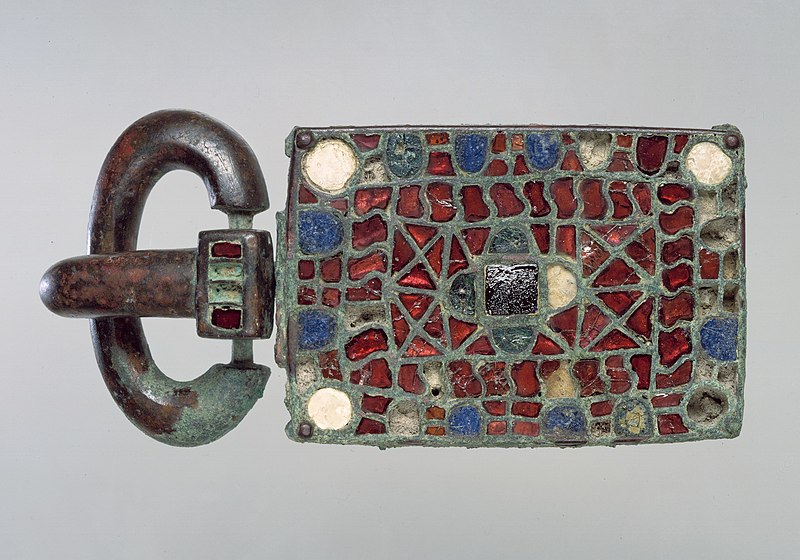
Visigothic belt buckle made of copper alloy, garnets, glass, and lapis lazuli. The intricate design shares similarities with artifacts from the Anglo-Saxon Sutton Hoo burial. Housed in the Metropolitan Museum of Art, New York.
From Adrianople to the Sack of Rome
In 376 CE, the Tervingi and Greuthungi crossed the Danube seeking asylum from the Huns. Roman mismanagement and abuse led to open revolt. At the Battle of Adrianople in 378, Gothic forces destroyed a Roman army and killed Emperor Valens. In 410, Alaric’s Visigoths sacked Rome—not as destroyers but as negotiators. They spared churches, protected civilians, and withdrew after three days, seeking land and legal recognition, not conquest.
Theodoric and the Restoration of Italy
The Ostrogothic king Theodoric the Great entered Italy in 489 under imperial commission and established a kingdom by 493. His rule preserved Roman institutions, repaired infrastructure, and upheld a dual system: Roman law for Romans, Gothic tradition for Goths. His court at Ravenna became a center of classical learning and Christian diplomacy. Theodoric embodied a synthesis of Germanic kingship and Roman statecraft.
Gothic Nobility, Roman Culture, and Symbiosis
Far from being cultural antagonists, the Goths adopted Latin, respected Roman senatorial traditions, and even studied Roman law. Gothic noble families intermarried with Roman elites, and many Gothic soldiers rose in imperial ranks. Their kingdoms became laboratories of cultural fusion, balancing tradition with adaptation.
The Visigothic Kingdom in Hispania

A pair of Visigothic eagle-shaped fibulae from Tierra de Barros, Badajoz, crafted from sheet gold and inlaid with amethysts and coloured glass (Photo: Walters Art Museum).
Law, Administration, and Cultural Fusion
After settling in Gaul, the Visigoths moved into Hispania in the early sixth century. At Toledo, they forged a powerful kingdom with its own law code (Lex Visigothorum), blending Gothic custom with Roman jurisprudence. Visigothic Hispania also hosted major church councils that shaped Western Christianity, particularly under Reccared I, who converted the kingdom to Nicene orthodoxy in 589.
Legacy in Spanish Christian and Legal Traditions
Visigothic legal traditions persisted into the early Middle Ages, influencing both canon law and Spanish civil codes. Architectural remains, such as San Pedro de la Nave, reflect a distinct style rooted in Roman forms but adapted with Germanic motifs. The Visigoths became progenitors of later Iberian Christian kingdoms that resisted Muslim conquest.
Diaspora and Enduring Memory

The Spearhead from Kovel, dating to the 3rd century CE, bears a runic inscription in Elder Futhark and is one of the earliest known examples of runic writing. Found in present-day Ukraine, it is linked to the Gothic or East Germanic sphere and features the name "tilarids," likely meaning "thither-rider" or "target-rider".
Crimean Goths and Linguistic Survival
A Gothic-speaking population persisted in the Crimea into the early modern period. Sixteenth-century travelers recorded their language, and some Gothic words survive in lists compiled by diplomats. These Crimean Goths are the last known community to speak a Gothic dialect, long after their western cousins disappeared.
Nova Anglia: Anglo-Saxons and the Gothic East
After the Norman Conquest of 1066, many Anglo-Saxon nobles fled England and entered Byzantine service as Varangian Guards. According to medieval accounts and Spanish cartographic sources, some settled in former Gothic lands near the Black Sea, founding "Nova Anglia." This remarkable continuity links the Anglo-Germanic diaspora to ancient Gothic territory, reinforcing the region's status as a cradle of Germanic resilience.
The story of the Goths is not simply one of collapse and invasion, but of transformation, preservation, and adaptation. From their mythic origins in Scandza and their dominance in Scythia, to their service in Rome and state-building in Hispania, the Goths demonstrated how a migratory people could become stewards of civilization. Their myths linger in the names of gods and tribes; their laws and letters shaped medieval kingdoms; their cultural ethos fused the heroic with the sacred. In them, we glimpse the bridge between the ancient and the medieval world.
ᚸ

Getica: The Origin and Deeds of the Goths by Jordanes
Frequently Asked Questions (FAQs)
Did the Goths really come from Scandinavia?
Jordanes attributes a Scandinavian origin, and similarities in burial customs support contacts across the Baltic, but direct migration remains debated.
Why did the Goths choose Arian Christianity?
Ulfilas evangelized them when Arianism was ascendant in imperial politics; adopting it pre‑dated any quest for Roman favour and reflected independent theological agency.
How are Geats, Gutes, and Goths related?
All share the Proto‑Germanic root Gaut‑/Gut‑, signifying common linguistic heritage, though classical and medieval writers distinguished the tribes politically.
What is the Codex Euricianus?
A late‑fifth‑century Visigothic law code blending Roman legal practice with Gothic custom, compiled under King Euric at Toulouse.
Did any Gothic language survive the Middle Ages?
Yes; a Crimean Gothic dialect lingered on the Black Sea coast and was still noted by travelers in the sixteenth and seventeenth centuries.
References
Heather, Peter. "The Goths" (Blackwell, 1998)
Wolfram, Herwig. "History of the Goths" (University of California Press, 1988)
James, Edward. "Europe's Barbarians, AD 200-600" (Pearson, 2009)
Burns, Thomas S. "A History of the Ostrogoths" (Indiana University Press, 1984)
Collins, Roger. "Visigothic Spain 409-711" (Blackwell, 2004)
"Europe in 205 AC" By Richard Ishida - r12a@w3.org . - Historical maps: Europe, CC BY-SA 4.0, https://commons.wikimedia.org/w/index.php?curid=82888805
"San Pedro de la Nave (30074678072)" by Ángel M. Felicísimo from Mérida, España is licensed under CC BY 2.0.

